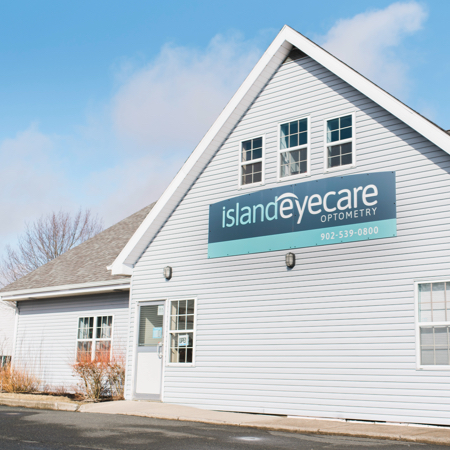Keeping Your Eyes Healthy
Diabetes is a chronic condition that affects how your body’s blood glucose (sugar) levels. Your body needs glucose as energy to function. But when your body can’t process it, the prolonged high levels can affect almost every part of you, including your eyes.
People with diabetes (type 1 and 2) should have regular eye exams so we can monitor for signs of eye disease and act early to help prevent vision loss.
With regular diabetic eye exams and appropriate treatment, we can help support not just your vision but your overall wellness. We want to be there for you. Book your diabetic eye exam at Island Eyecare today.
Book Appointment
How Often Should You Have a Diabetic Eye Exam?
Diabetes Canada recommends regular eye exams for those with diabetes.
Patients with type 2 diabetes without signs of diabetic retinopathy should have an eye exam at least every 2 years. For those with type 1 diabetes or type 2 with diabetic retinopathy, yearly eye exams are recommended.
You may not see or feel changes to your eyes’ health, but diagnostic technology can take detailed images that help us evaluate the blood vessels at the back of your eyes.
Diabetic Eye Disease
Diabetic eye disease refers to a group of eye conditions linked to uncontrolled diabetes. Your risk of developing diabetic eye disease increases over time, and can lead to early cataracts, glaucoma, diabetic retinopathy, and macular edema.
When untreated and uncontrolled, diabetes can lead to blindness. Prevention is one of the most effective tools we have to protect your vision.
Here are a few effective ways you can help keep your eyes healthy:
- Get an eye exam at least once a year.
- Keep your blood glucose, blood pressure, & cholesterol in check.
- Quit smoking and stay active with regular exercise.
Diabetic retinopathy is a degenerative eye disease that occurs when unregulated blood glucose levels damage the tiny blood vessels in the back of the eye. When these blood vessels are damaged, they can swell, burst, and leak fluids into the eye. Fluid leakage can cause scarring, block vision, and increase pressure inside the eye.
The early stage of diabetic retinopathy, called nonproliferative diabetic retinopathy, occurs when the blood vessels weaken, bulge, or leak into the retina.
In more advanced stages, called proliferative diabetic retinopathy, the blood vessels close off, causing new, abnormal vessels to grow on the surface of the retina. This stage of diabetic retinopathy is serious and can lead to permanent vision loss and even blindness.
Diabetic macular edema often happens as a result of untreated diabetic retinopathy. When the damaged blood vessels leak fluid into the eye, it causes surrounding tissues to swell, including the macula. The macula is the central-most part of the retina and is responsible for your central vision. This swelling can lead to central vision loss.
Diagnosing Diabetic Eye Disease
At Island Eyecare, our primary goal is to make sure your ocular health and vision are well cared for. If you have diabetes, your eye exam may include some specialized tests to help detect early signs of diabetic eye disease.
Optos Retinal Imaging
We use optos ultra-widefield imaging technology to help detect, diagnose, document, and treat diseases that may go undetected with traditional examination techniques. An optos scan is a noninvasive imaging tool that can provide high-resolution images of your retina without eye drops or pupil dilation.
Optical Coherence Tomography
Optical coherence tomography (OCT) is a noninvasive imaging technique used to help capture cross-section images of your retina. The tool takes high-resolution images of your retina so we can assess the thickness of each layer, helping us pinpoint early signs of retinal disease.
Book Your Diabetic Eye Exam Today
You’re not alone. About 1 in 3 Canadians are living with diabetes, yet many don’t realize how it can impact their eyes.
We’re ready to support your vision. If you have questions about diabetes and your eye health, let’s talk.
Book your eye exam today.
Book Appointment

Dry Eye Services & Diagnostics
At Island Eyecare, we work hard to find innovative ways to invest in your eye health and vision. We offer a range of modern technologies and treatment options to help alleviate dry eye and offer you genuine relief.
Our main goal is to get to the root of your symptoms, so you can enjoy longer-lasting relief from red, scratchy eyes.
Rediscover Clearer Vision with MacuMira
Island Eyecare is excited to offer MacuMira, a groundbreaking, noninvasive treatment for dry age-related macular degeneration (AMD). If you have vision loss caused by dry AMD, MacuMira could be the solution you’ve been waiting for.
This clinically tested technology uses microcurrent stimulation to help nourish and restore your vision, improving your ability to see and experience life with greater clarity. Schedule a consultation with us to learn if MacuMira can help you take the first step toward clearer vision.
University Teaching Program


Dr. Shaun MacInnis is thrilled to serve as a Clerkship supervisor at the University of Waterloo’s School of Optometry and Vision Science. The Clerkship program offers students invaluable hands-on experience, significantly enhancing their clinical, diagnostic, and management skills.
Our Location in Sydney
Find us in Sydney, Nova Scotia, on the corner of Welton Street and Spruce Street. Our office is down just from the Sydney Memorial Chapel. There is ample free parking next to our building.

Our Address
- 117 Welton Street
- Sydney, NS B1P 5R6
Contact Information
- Phone: 902-539-0800
- Email: [email protected]
Hours of Operations
Our Google Reviews
Our Testimonials
Super friendly services. Cleanliness and sterilization routines were impeccable! You will feel 100% safe and comfortable here. They also have very modern and numerous pieces of equipment to assure that every aspect of your eye care is investigated thoroughly!
Ron D.
Outstanding practice! Dr. Shaun MacInnis has totally re-vamped this facility with the most advanced technologies in eye care and vision needs. Extremely professional, knowledgeable, and courteous staff. I highly recommend Brittany, a tremendous optician, who is sure to provide you with excellent service for all of your eyewear needs! She is superior in her field! Well done Island Eyecare!
Elizabeth M
Professional and courteous staff, took time to explain and answer questions. Very thorough examination and use of the latest technologies to support the doctor.
Alan A.
It’s always a great experience going to Island Eyecare. Shaun and staff are extremely knowledgeable and always a great pleasure to deal with! Shout out to Jessica who made my visit today a little brighter with her awesome personality and helpfulness. 🙂
Deanna H.
Loved my experience. The inside was completely made over, which completely blew me away. The staff were extremely helpful and up to date with the latest trends and technologies. The eye care professional was professional and very thorough.











